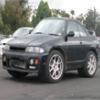Crap Fuel Economey...
Announcements
-
Similar Content
-
Latest Posts
-
Some of them keep working fine. 9 out of 10 of them end up causing an absolute misery bleeding the system and get thrown on the workshop floor in a tantrum and never thought about again because they were never really needed and just added crap to the car that we could have done without. Same-same with HICAS, A-LSD, and various other stupidities that over eager 10x engineers thought we had to have.
-
By joshuaho96 · Posted
Not required but appreciated. Super Coppermix Twin even the non-competition model feels like the pedal is noticeably heavier than stock which was pretty well judged IMO. I'll be swapping in the Nismo operating cylinder soon to see how that feels. Personally I haven't felt anything that justifies replacing the damping loop, at least compared to more modern stuff where the clutch delay valve is actually quite noticeable. -
He made that comment in my thread - In my case the vents ARE to lower engine heat, when the car is not moving, which is the only scenario I have heat problems with the aircon on, sitting in traffic, on 40C+ days. I can't imagine a scenario that this NC needs any at this point in time. I do not know if it will actually make my cooling when the car is MOVING worse, and I sincerely hope that won't be the case. If it does, well, um, f**k.
-
Nice, thanks. Thats why I was asking, there'd been a fair bit of discussion in the E90 world about vents and where it makes sense to put one (ie, over the filters is not great as that is inline or slightly behind the struts and in higher pressure area). I struggle with air flow and pressures. It sill weirds me out that a radiator in the boot can work.
-
Neither really Vents, when located in the right place, will lower the engine bay "pressure", as air has a path to escape, thus lowering the engine bay pressure, thus.....improving the efficiency on the coolant stack (read: IC, condenser, radiator) This is why the Blits vented bonnet on my 33 worked so well, the vent was in the front 1/3 of the bonnet, which put it right after the radiator If the vents are to far back toward the windscreen, which is a high pressure zone, it can actually force air into the engine bay, causing higher pressure and effectively loosing efficiency on the cooling stack, like the fab of raising the rear of the bonnet, which does allow heat to escape, but only when the car isn't moving There's heaps of cool "fluid dynamics" info out there, but, I'll attach a video of a 'Merican joint that focuses on "Miatas" as I found it when looking into vents for mine, they explain it way better than me
-







Recommended Posts
Create an account or sign in to comment
You need to be a member in order to leave a comment
Create an account
Sign up for a new account in our community. It's easy!
Register a new accountSign in
Already have an account? Sign in here.
Sign In Now